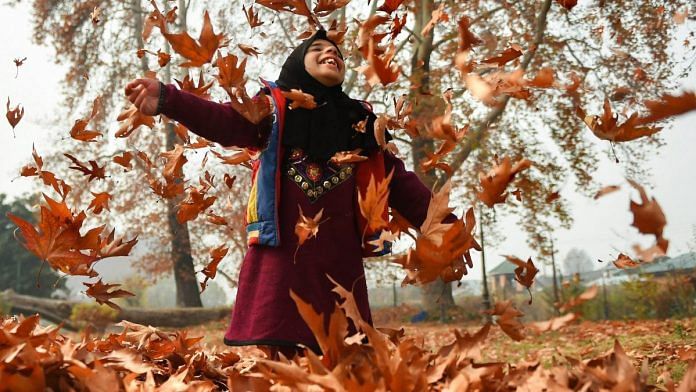The golden and red colours of autumn have arrived months early in the English countryside – and wildlife experts are sounding the alarm about the unseasonal changes to the landscape.
Much of the UK is experiencing a “false autumn” as parts of nature go into survival mode in response to record-breaking heatwaves and drought.
The lack of rain is putting trees under stress and they are shedding their leaves as much as three months earlier than normal to save water and energy.
Droughts leading to crop failure and wildfires
Signs of a false autumn have been reported across the UK, but could also be seen in other parts of the world because of severe and widespread droughts.
In Europe, the droughts could be the worst for 500 years, and are leading to crop failure and wildfires, according to the European Commission.
Is ‘nature’s timing’ off?
The Commission says 64% of the European Union (EU) is facing drought warnings or alerts. China is also seeing its worst drought in decades, the Financial Times reports.
In the UK, Steve Hussey, of the Devon Wildlife Trust, told The Times: “The most obvious thing that we are seeing is some trees have to shut up shop effectively and close early… if nature’s timing is out, then that’s a real problem”.
The sound of dried leaves crackling beneath your feet before the end of Britain’s school summer holidays is unsettling, and a worrying symptom of the climate crisis.
The UK Met Office’s Chief Scientist Professor Stephen Belcher says without human activity affecting the climate, the 40°C temperatures seen this summer would be “virtually impossible” in the UK.
The drought resulting from these record temperatures has caused the false autumn, says Fritha West of the Woodland Trust: “In dry weather, the sugars in leaves become more concentrated and the leaves produce more anthocyanin (red and pink colour pigments)”.
That change in pigmentation turns leaves into their characteristic autumn colours. The trees then discard them to preserve moisture in their branches and trunks.
Younger trees may not recover
Well-established trees have extensive networks of roots which should allow them to survive the parched conditions that have caused the false autumn.
But younger trees and those planted in poor quality soil near roads might never recover, Leigh Hunt, senior horticultural advisor at the Royal Horticultural Society told the BBC.
Hunt says there is a “critical point” when a tree can’t replace the water it has lost, and it will simply dry up and die.
Fruit and berries ripen months earlier
The Woodland Trust says the false autumn isn’t the only way climate change is throwing “the cycles of nature off-kilter” in 2022.
The organization says fruit and berries may be smaller and fall months earlier than usual because plants need to preserve scarce water during droughts. The Trust received reports of ripe blackberries on 28 June this year – one of the earliest dates on record.
Fruit ripening so early in the summer means it won’t be available later in the year. That’s a disaster for animals like bank voles and blackbirds who depend on it to build up their energy reserves for winter, the Woodland Trust says.
Global efforts to restore and plant trees
Wildlife experts are urging people to leave a regular supply of water in their gardens to help birds and animals like hedgehogs and badgers cope with the false autumn.
Trees are getting help too. Scientists are using “fog collectors” to provide them with water in Portugal and in Spain’s Canary Islands, reports The Guardian.
The collectors are sheets of plastic mesh which take moisture from the air. They were developed as part of the Life Nieblas scheme to tackle degraded landscape.
Other work is underway as part of the World Economic Forum’s 1t.org initiative. The project mobilizes the private sector to support ‘ecopreneurialism’ and global efforts to conserve, restore and grow a trillion trees by 2030.
Also read: Byton, BYD, SAIC, Nio, XPeng—China’s electric car industry is locking horns with US’ Tesla



